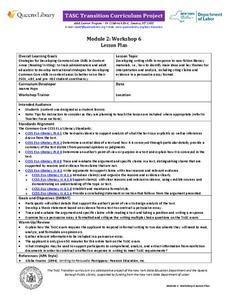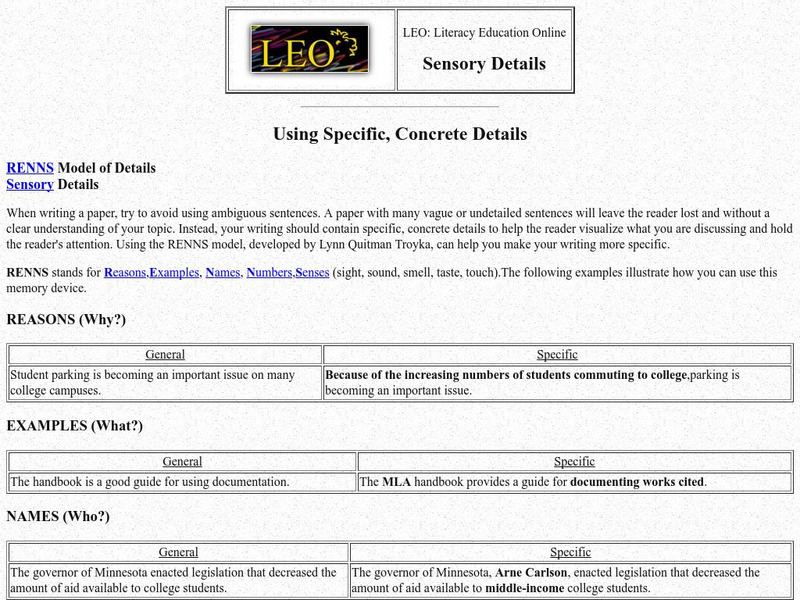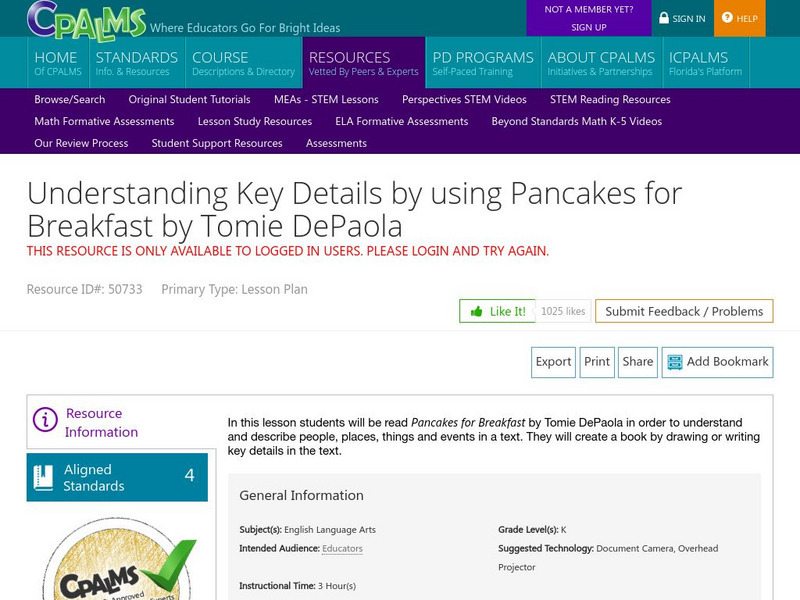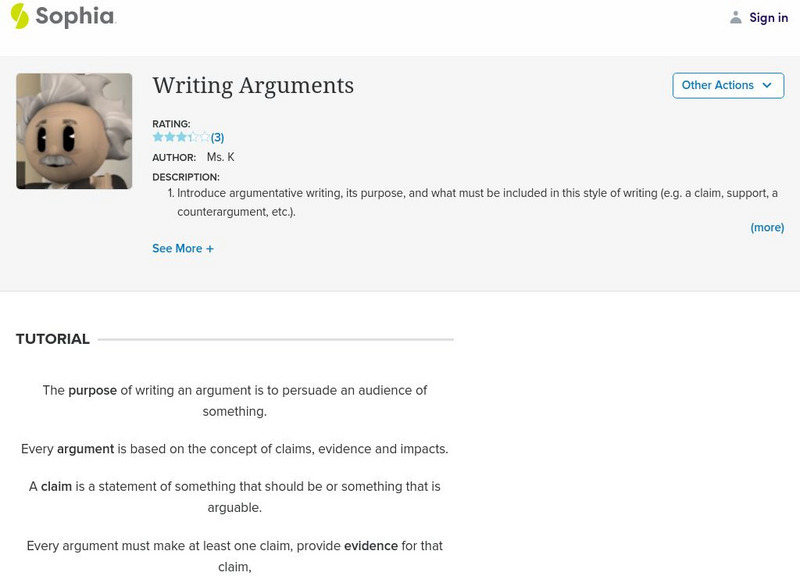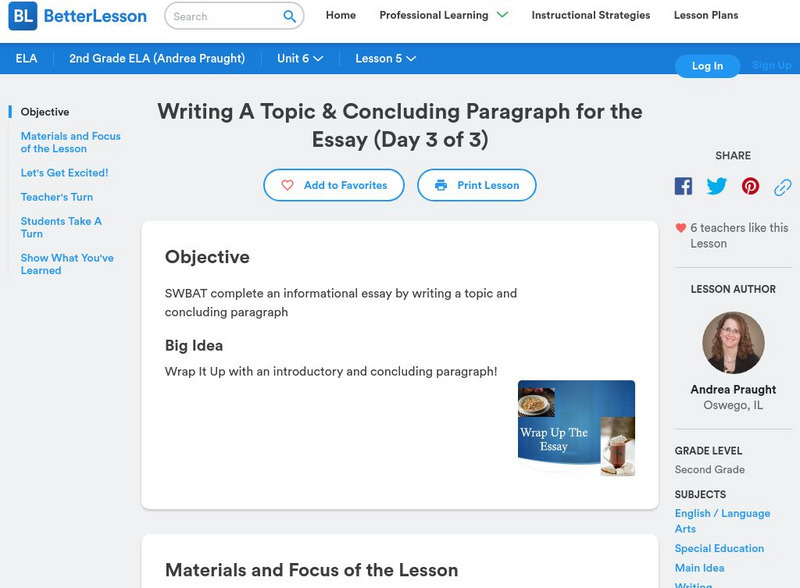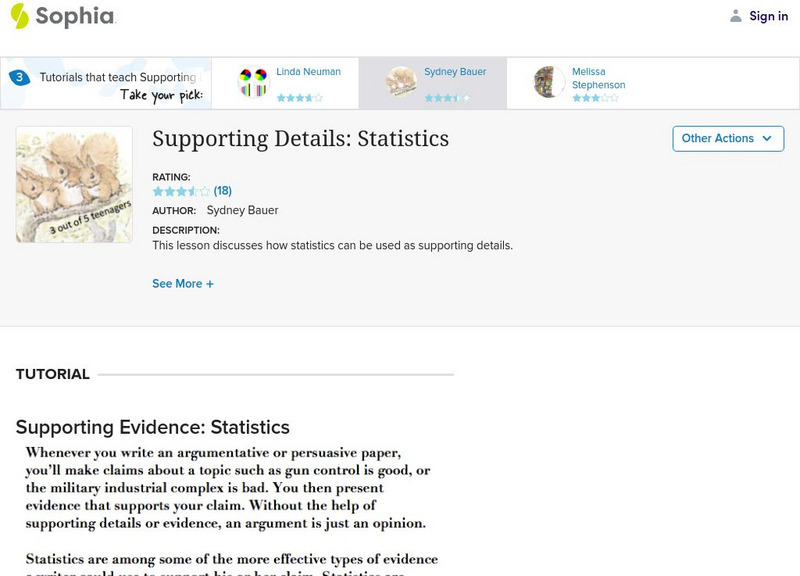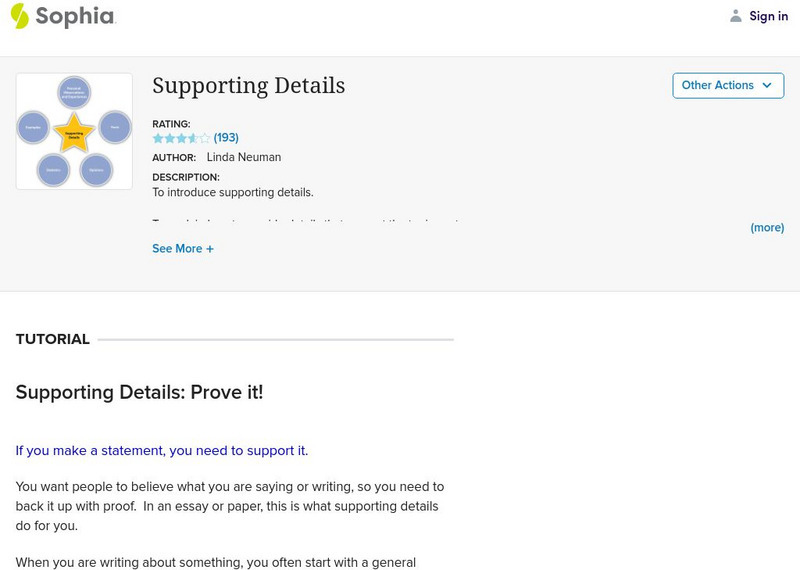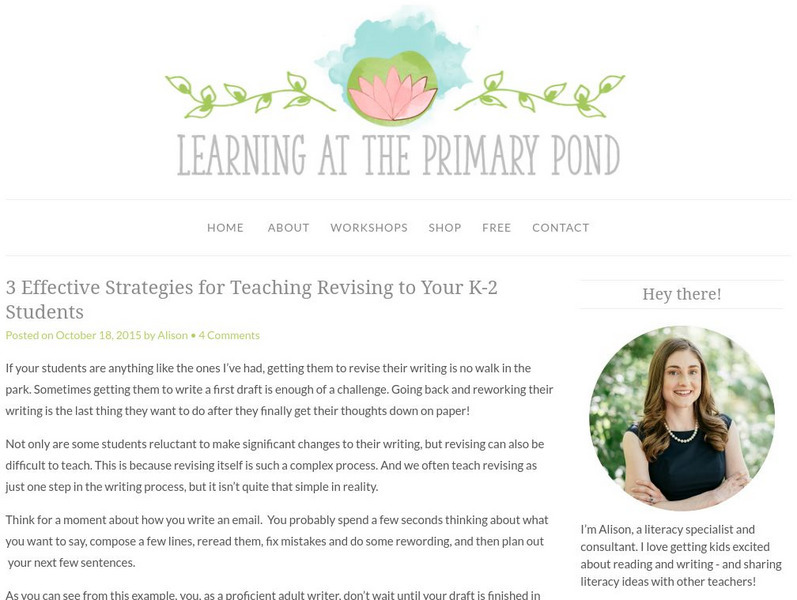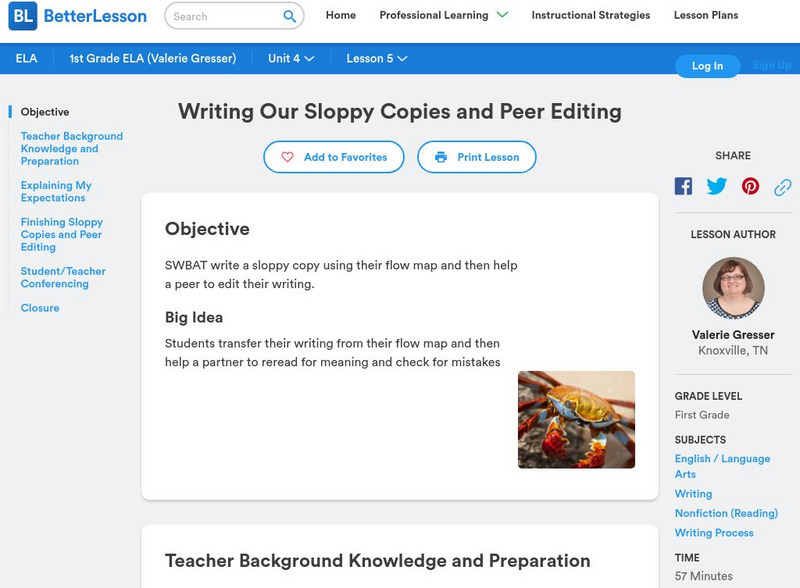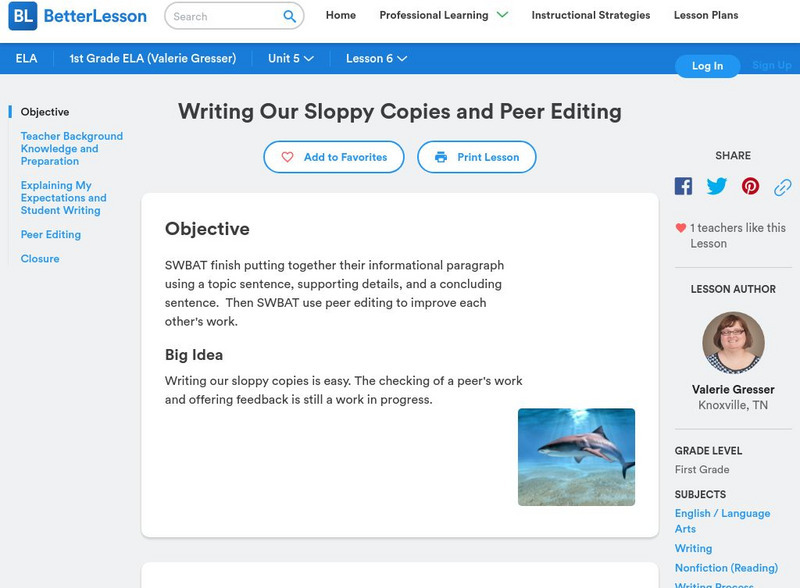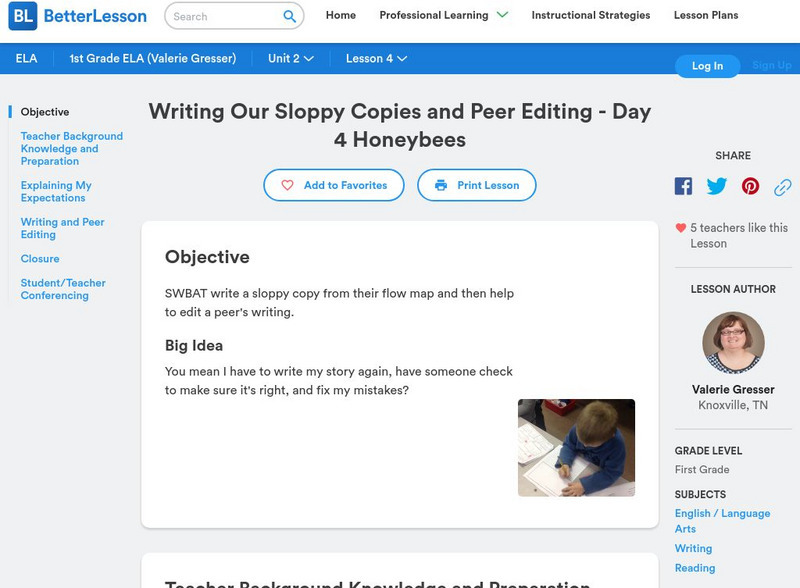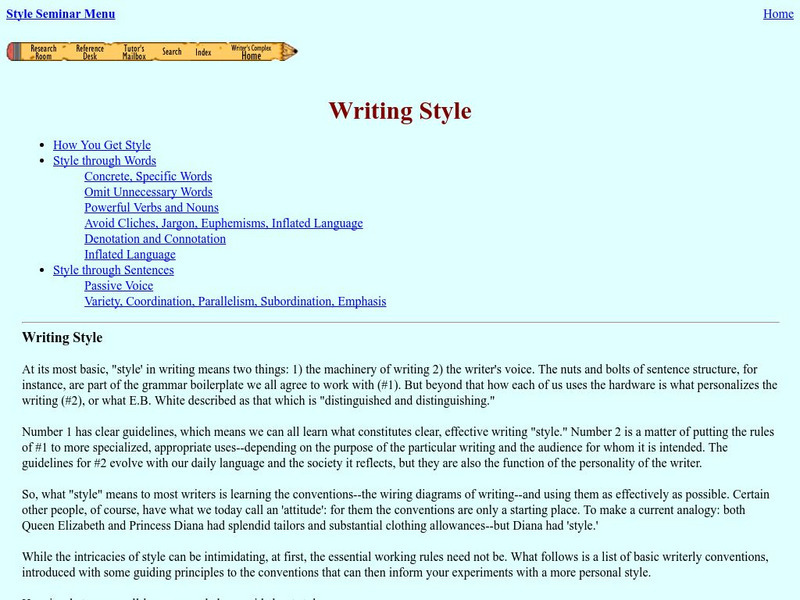Missouri Department of Elementary
R-E-S-P-E-C-T: A Basic Skill
Imagine seventh graders developing a school wide plan to promote respect in their school. That's the vision behind the second instructional activity in the R-E-S-P-E-C-T series. In preparation for designing a school-wide media campaign,...
EngageNY
TASC Transition Curriculum: Workshop 6
Is a college education necessary for success in today's world? The class investigates the question, along with others at the end of the sixth workshop in a 15-part series. The lesson has four parts with multiple activities and...
New York State Education Department
TASC Transition Curriculum: Workshop 10
How have educational standards evolved? Educators of adults examine expectations in the 10th workshop out of 15 to better determine how standards have grown. Participants respond to a variety of sample questions to determine how they...
The Write Place
Literacy Education Online
Literacy Education Online (or LEO) is a great place to start if you need help with your writing. The homepage is organized around kinds of problems or questions you might have concerning your writing. Find your problem, click on the...
The Write Place
Literacy Education Online: Sensory Details
This site provides several sample sentences which show sensory details and aid students in writing specific rather than general sentences. It is a good site for someone preparing to write a descriptive essay. W.9-10.3d Precise/sensory...
University of North Carolina
University of North Carolina: Writing Center: Handouts: Evidence
What kinds of evidence best support the points you make in a paper? Where can you find the evidence you need? This handout answers all these questions and more, including the difference between primary and secondary sources. You'll also...
CPALMS
Cpalms: Understanding Key Details by Using Pancakes for Breakfast
[Free Registration/Login Required] In this lesson plan, learners will be read Pancakes for Breakfast by Tomie DePaola in order to understand and describe people, places, things and events in a text. They will create a book by drawing or...
Sophia Learning
Sophia: Writing Arguments
This tutorial focuses on argumentative and persuasive writing: it lists and defines the components of arguments, provides a flow chart for argumentative writing, defines counterarguments, and lists the 3 elements of persuasion: ethos,...
Better Lesson
Better Lesson: Writing a Topic & Concluding Paragraph for the Essay
This lesson is a final step towards supporting young scholars to practice writing an informative/explanatory paragraph conveying complex ideas and presenting information clearly and accurately. Second-grade students can usually write a...
Sophia Learning
Sophia: Supporting Details: Statistics
This lesson focuses on using statistics as supporting details. It explains why statistics make powerful supporting details, however, these can be skewed to show different outcomes. It suggests looking carefully when using statistics to...
Sophia Learning
Sophia: Supporting Details
This tutorial focuses on supporting details using a video of a paragraph from a book showing the topic sentence and two strong, reliable, supporting details. This is followed by a slideshow that stresses the need for variety in the types...
National Endowment for the Humanities
Neh: Edsit Ement: All Together Now: Collaborations in Poetry Writing
Three learning activities to teach K-2 students about poetry. Very detailed lessons with references and other suggested activities. Ways to individualize and academic content standards are noted. (Attachment may not load in archived URL.)
ReadWriteThink
Read Write Think: Digging Up Details on Worms: Using Science in an Inquiry Study
A lesson plan based on a study unit of earthworms, using the inquiry model to integrate scientific processes with literacy practices. Instruction plans, related resources, and standards are included.
Other
Learning at the Primary Pond: 3 Effective Strategies for Teaching Revising
A literacy specialist shares three effective strategies for teaching students revising techniques. These include providing students with specific criteria and peer revision. Examples of resources used in a classroom lesson are pictured.
The Write Place
Literacy Education Online: Logical Fallacies
This site from the St. Cloud State University provides many links in this index with general writing help. Under "Development" you'll find "Sensory Details." Under "Logical Fallicies" you'll find a link by the same name. Look under...
Better Lesson
Better Lesson: Writing an Opinion in Response to the Story
Learners need to have lots of opportunities to share their opinions based on text. In this lesson, the teacher will read the story, Jack and the Beanstalk, multiple times before the students create their opinion. The detailed process of...
Better Lesson
Better Lesson: Writing Our Sloppy Copies and Peer Editing
Learners will write a sloppy copy and help a peer to edit their writing. They will use a kid-friendly checklist (included)to help each other find their mistakes. Videos of students engaged in the lesson are provided, along with a...
Better Lesson
Better Lesson: Writing Our Sloppy Copies and Peer Editing
Students will write a sloppy copy and help a peer to edit their writing. They will use a kid-friendly checklist (included)to help each other find their mistakes. Videos of the instructional activity in action are provided, along with a...
Better Lesson
Better Lesson: Writing Our Sloppy Copies and Peer Editing Day 4 Honeybees
You mean I have to write my story again, have someone check to make sure it's right, and fix my mistakes? In this instructional activity, students will peer edit each other's writing. They will use their five-star checklists (included)...
Better Lesson
Better Lesson: Tie It Up With Transition Words to Write a Story!
Read, write, and present a digital narrative with transition words to help us put the events in order! After modeling the lesson, groups of students will write narratives to recount a short sequence of events, they will include details...
Better Lesson
Better Lesson: Come Along Daisy
Students will engage in discussions about story details and write an informational piece about the events in the story "Come Along Daisy".
ReadWriteThink
Read Write Think: Oral Presentation Rubric [Pdf]
This reproducible resource provides an assessment rubric to be used with students' oral presentations. CCSS.ELA-Literacy.CCRA.SL.4
ReadWriteThink
Read Write Think: Draw a Story: Stepping From Pictures to Writing
Help young students move from drawing pictures into writing simple stories. Good plan for having students put pictures in sequential order and teaching them about sequential order.
SUNY Empire State College
Empire State College: Writing Style Seminar
This detailed resource provides a good tutorial on writing style, whether informal or formal. It explains how to get style through word and sentence choice and includes lots of examples. W.9-10.1d & W.9-10.2e Style/tone/conv,...

